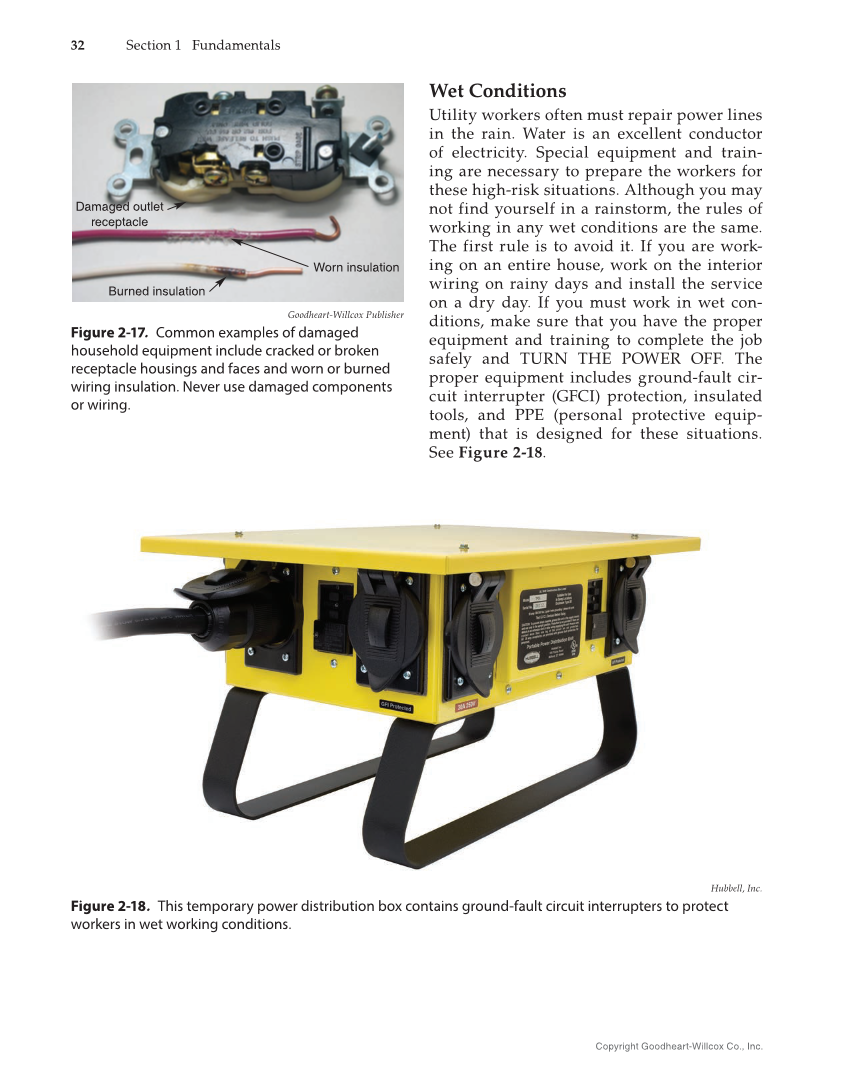32 Section 1 Fundamentals Copyright Goodheart-Willcox Co., Inc. Wet Conditions Utility workers often must repair power lines in the rain. Water is an excellent conductor of electricity. Special equipment and train- ing are necessary to prepare the workers for these high-risk situations. Although you may not find yourself in a rainstorm, the rules of working in any wet conditions are the same. The first rule is to avoid it. If you are work- ing on an entire house, work on the interior wiring on rainy days and install the service on a dry day. If you must work in wet con- ditions, make sure that you have the proper equipment and training to complete the job safely and TURN THE POWER OFF. The proper equipment includes ground-fault cir- cuit interrupter (GFCI) protection, insulated tools, and PPE (personal protective equip- ment) that is designed for these situations. See Figure 2-18. Damaged outlet receptacle Burned insulation Worn insulation Goodheart-Willcox Publisher Figure 2-17. Common examples of damaged household equipment include cracked or broken receptacle housings and faces and worn or burned wiring insulation. Never use damaged components or wiring. Hubbell, Inc. Figure 2-18. This temporary power distribution box contains ground-fault circuit interrupters to protect workers in wet working conditions.
